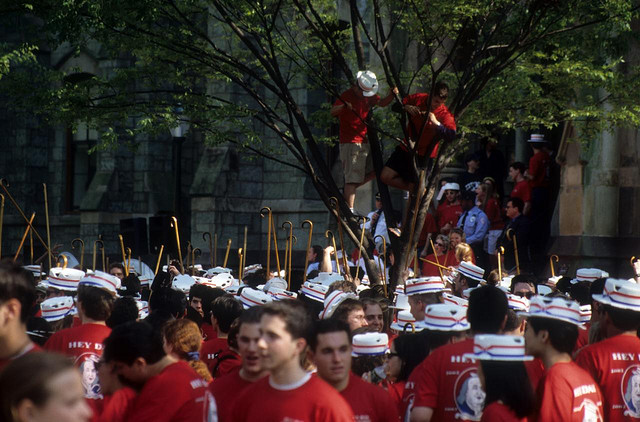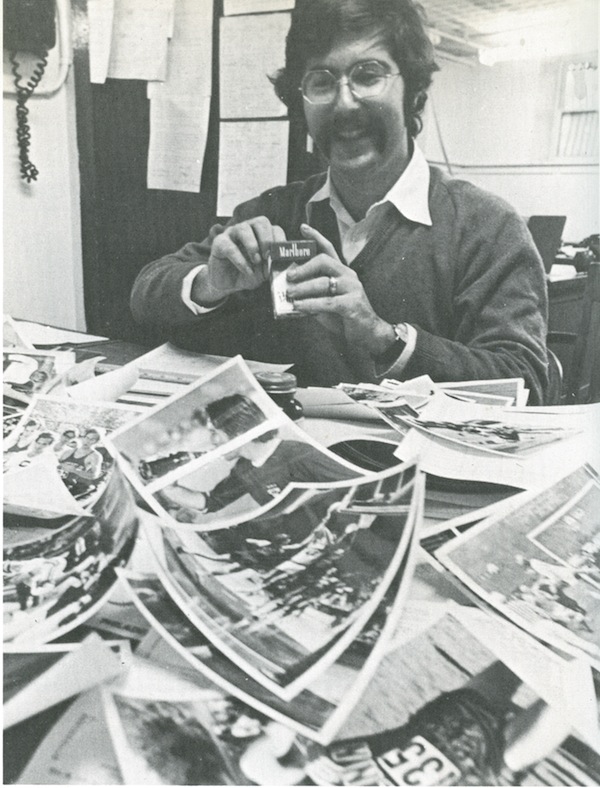
I truly bleed red and blue. From my first day at the University of Pennsylvania in the fall of 1968 to the present, my pride in being a Quaker has rarely wavered. I have endured Princeton students’ chants of “Safety School,” at basketball games, confusion among the general populace between Penn and Penn State, and even an invitation to leave the Ivy League for the Atlantic Coast Conference. I am in my third year now as president of the class of 1972. In my 42 years as an alumnus, I have served as class reunion chairman three times, as an alumni interviewer of high school applicants for admission, and as a mentor to different on-campus groups.
I have no idea why I am so devoted to Penn. What I do know is that I was a much better person when I graduated than when I entered. In addition to gaining a greater appreciation of college basketball, soft pretzels with mustard, and recreational drugs, I developed for the first time a social conscience, political awareness, and an understanding of others who had a different type of intelligence than I possessed. I no longer accepted as the gospel every idea that previously had been force-fed to me by my parents and teachers. I learned the skill of critical thinking.
Like alumni of colleges around the country, I check out the US News and World Report rankings of universities and colleges and have been gratified when Penn rises in the poll (as high as fourth in 2012) and somewhat dismayed when we fall (tied for eighth this year). Last month, one publication selected Penn as the number one research university in the world; another proclaimed that more Penn graduates were billionaires than those of any other college. Neither of these two titles came as a surprise to me. However, Playboy’s selection of my alma mater as the top party college in the nation came as a total shock.
It is particularly surprising when viewed from the perspective of an undergraduate from the late 1960s and early 1970s. At that time, although Penn was the first Ivy League school to admit women, the ratio of males to females was roughly 5 to 2. As a result, the average heterosexual man (gay students were still sequestered–they didn’t come out) had to import dates from the neighboring women’s colleges–such as Bryn Mawr, Harcum, and (yes) Beaver College. Dates from those schools were more interested in wedding bands than drugs, sex, and rock ’n’ roll. And although over 50 percent of my class joined either fraternities or sororities, the popularity of the Greek system at Penn diminished significantly during my four years there, as the peace movement and feminism gained traction.
At that time, the legal drinking age in Pennsylvania was 21, and fake IDs were relatively hard to obtain. Unless you were friends with the hockey players who served as bouncers at the legendary campus bar, Smokey Joe’s, an underage male student had no chance of entering. Most undergraduates rarely ventured to the restaurants, bars, and clubs in Center City due to lack of age or funds. And as recreational drugs got more popular on campus, the taste of the cheesesteaks improved, but the parties did not. All in all, while the party atmosphere at Penn certainly was superior to that found at all-male universities that were still prevalent in those days, in no way did it compare to the culture at the Big Ten colleges or many state universities.
While memorable parties were few and far between, there were some weekends upon which I look back and wonder how I survived. In particular, I remember an engagement party for one of my three roommates in the spring semester of my senior year. After a rather raucous dinner at a Turkish restaurant complete with belly dancers, we returned to our house for the party. The guests consisted of our fraternity brothers, my friends from the college newspaper, my newly engaged roommate’s friends from the campus Jewish center, the skating pros who taught with another roommate at the college rink, and co-workers from a child care center where my third roommate was employed. We also invited our neighbors, who weren’t affiliated with the campus in any way; our relationship was based on bartering our drugs for theirs. The next morning, our dining table had been broken in half, and I woke up with two women in my bed. (Though given all that had taken place beforehand, it is unlikely that anything happened there.)

However, that night was the exception, not the rule: I spent most of my nights at Penn either working until deadline in the newspaper offices or writing papers due the next day. The environment at Penn does not seem to have changed so radically that it would reach the Playboy pinnacle. In conjunction with my alumni activities, I visit the campus a minimum of five times per year. While I am mostly at meetings, athletic events, and dinners, I do find my way into at least one campus watering hole per visit—where I am just as likely to meet students from nearby Drexel as I am to come across a Penn student. As I stroll down Locust Walk through the center of campus after a football or basketball game, the fraternities that line the east side of the walk seem more subdued than they were 40 years ago. The ratio of men to women on campus is now roughly 1-to-1, and the students are better dressed and better-looking, but it always seems like the undergrads are in a rush—to the library, to a study group, to the gym, to a music organization, to a career counseling meeting, or to a part-time job. With these types of pressures, it is difficult for me to understand when Penn students have time to party enough to draw Playboy’s attention.
The student body seemed as surprised as I was by this latest distinction. In an online survey conducted by the campus newspaper, 76 percent of respondents said that Penn does not deserve the Playboy ranking. One of the students I mentor, Cha Cha, wholeheartedly agrees. As she explained to me in an e-mail, “I don’t think anyone was not surprised by this ranking. … If you aren’t into parties, you definitely won’t really come in touch with any–which is probably more unavoidable at an actual party school.”
Cha Cha—an exceptionally talented young woman who is going to graduate with degrees from both Wharton, the business school, and the College of Arts and Sciences—chose Penn because she believed it would give her the tools she needed to become a force in the medical industry. While she might be an atypical student, even for Penn (she studies even on big party weekends like Homecoming), she is closer to the norm on campus than a regular binge drinker is.
As a high school senior when I applied to Penn, I had no ambitions to be a force in the medical industry, or any other industry. I was thinking every weekend there would be an alcohol-induced orgy. I was infrequently right. Cha Cha clearly has a better grip on the value of a Penn education than I did—or that Playboy does, for that matter.




Send A Letter To the Editors